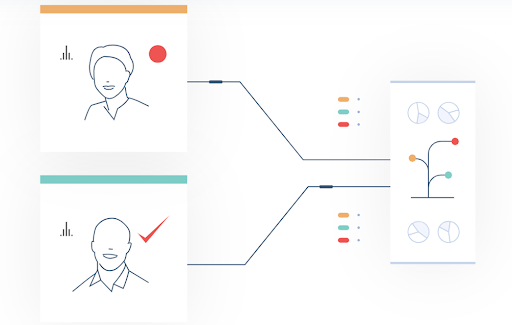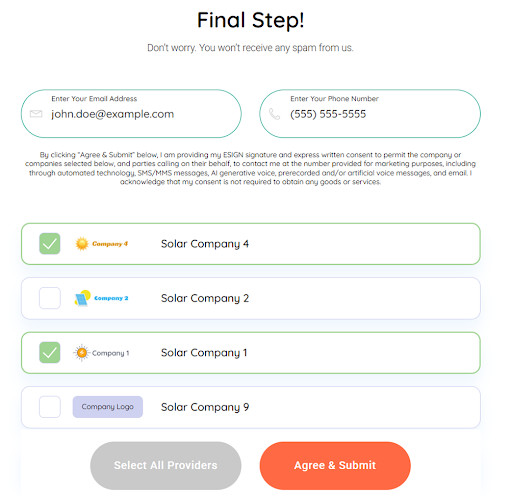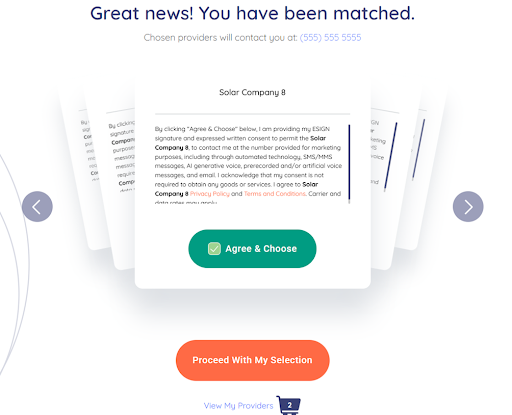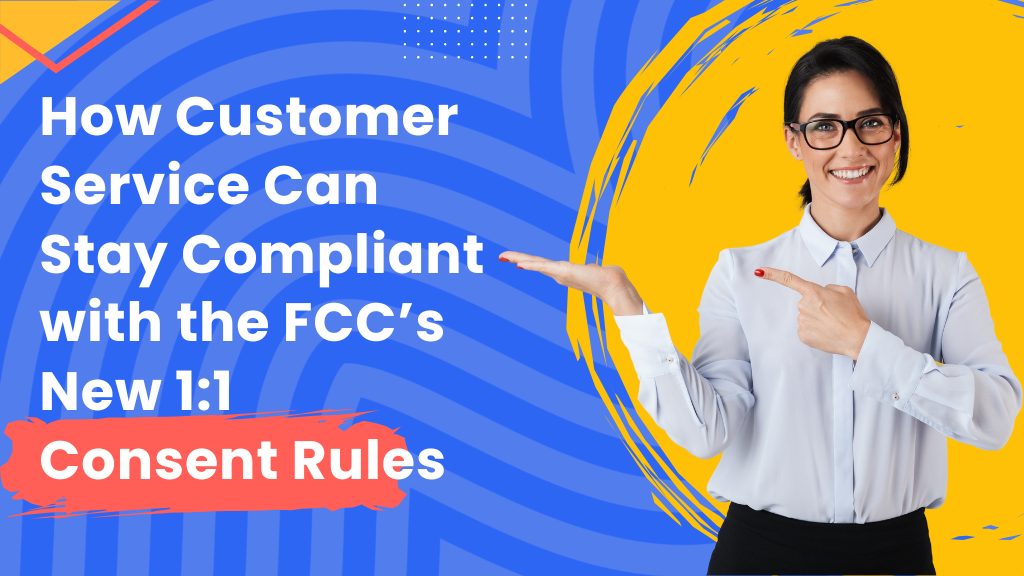Never have the TCPA consent management strategies changed as dramatically as they are changing now with customer service. Scheduled for 27 January 2025, the FCC’s TCPA update is forcing call and contact centers to revamp their consent collection, call recording, and sharing practices, a big deal for companies generating leads through ATDS calls and robotic texts.
But there’s also a silver lining: call centers that are relying on legitimate lead acquisition practices – affiliates, advertisers, affiliate networks, and performance marketers – are getting a chance to win audiences from non-compliant competitors.
The FCC update might be the best thing to happen to your business – just be ready for a compliance management overhaul.

Source: GIPHY
FCC One-to-One Consent Rule Update in a Nutshell
The history of consent management in the United States dates back to 1934, when the federal government amended the Communications Act to protect consumers from telemarketing calls, laying the foundation for the modern consent management landscape.
let’s uncover everything you should know to generate more calls in the post-TCPA-update era, from consent acquisition to legal call recording to opt-out management.
The Communications Act of 1934 has been known as the Telephone Consumer Protection Act (TCPA) since 1991, and the consent management rules have changed several times as new marketing technologies appeared and data usage issues arose.
The TCPA update, coming on January 27, 2025, continues the federal line at protecting consumers from marketing calls and allowing them to choose what communications they want to authorize. This change also impacts customer service interactions, ensuring businesses obtain clear consent before engaging with consumers. If lead generators could previously share consumer data with any number of companies after receiving one general consent, now they must obtain individual consent from every business that is placed on a lead generation form.
“We close the lead generator loophole by prohibiting lead generators, texters, and callers from using a single consumer consent to inundate consumers with unwanted texts and calls when consumers visit comparison shopping websites.”
Long story short, every call center that makes outbound phone calls must ensure they’ve gotten consent from the caller. And if they’re buying a phone call, they must possess the consent record transferred from the lead generator or whoever sells the call.
FCC One-to-One Consent Compliance Practices for Call Centers
#1. Consent Management Software
From collecting privacy-compliant location data to authorizing marketing communications in the new customer service compliance era, call centers have to ensure they collect consent timely and accurately and without breaches of privacy rights.
The easiest way to ensure FCC one-to-one consent is by having compliant software.
The good news is that you can rent cloud-based consent-ready lead tracking and distribution software at only a few hundred dollars a month and pave an optimal conversion path for every caller while always being on the legal side of the fence.

For example, Phonexa, a cloud-based performance marketing software provider, offers an eight-in-one lead tracking and distribution software bundle that helps call centers with outbound and inbound phone calls in bulk while staying FCC and TCPA-compliant.
#2. FCC-Compliant Lead Generation Forms
Now that individual consent is required, lead generators must include every advertiser they’re asking consent for on a lead generation form and also specify the types of communication they are asking to authorize, such as robocalls, SMS, email messages, etc. This ensures greater transparency and improves customer service by allowing consumers to have more control over their interactions.
You can do all of that with FCC-compliant lead gen forms.
In practice, this boils down to using specific consent language on a form – generic consent language or custom consent language.
Here’s an example of a generic consent language on a lead generation form:

Generic consent language can be used when the selection includes homogeneous brands (for example, all brands selling solar panels) that are asking to authorize the same marketing communications (for example, all brands are authorizing marketing calls).
Here’s an example of a custom consent language on a lead generation form:

If the selection includes heterogeneous brands, or the included brands are requesting different types of consent, then customer consent language must be used so customers know what communications they authorize with what company.
#3. DNC List and Opt-Out Management
Respecting the numbers in the national Do-Not-Call Registry is another crucial customer service compliance practice for call centers. You should check the inbound phone calls against the DNC Registry every 31 days and remove registered numbers from your marketing list. The same applies to text messages, which are now also covered by the DNC registry.
Likewise, you should provide consumers with easy opt-out mechanisms and ensure you do not contact them after they’ve opted out. Opt-out requests must be honored immediately, so you cannot make calls once a consumer requests to stop the communication and must store internal DNC requests for at least 5 years.
#4. Verbal Consent Collection
You can set up your IVR to collect verbal consent before processing the call. For callers who refuse to give consent, you must ensure no consent-requiring practices are applied.
#5. Storing and Transferring Consent Records
Consent record-keeping is another essential practice under the new TCPA regulations. Not only should the consent be recorded, but it should contain details like who gave the consent and when, how, and why it was obtained or revoked. The consent record must be stored for at least 4 years.
Lead generators must ensure data security and integrity during consent transfer by using secure transfer protocols, transferring the minimum necessary data, and using up-to-date encryption. These measures not only protect consumer information but also enhance customer service by fostering trust and transparency in communications.
#6. Consent Preferences and Consent Revocation
Another essential customer service compliance practice is ensuring a caller is flexible with the type of consent they grant or revoke. For example, a caller may want to authorize phone calls while prohibiting SMS messages and emails, and you should provide them with such flexibility.
Generate More Leads With Website & Messenger Chatbots
Gather quality leads on autopilot and 10x your ROI with automated chats
#7. Topical Relevance
Last but not least, the companies, products, or services represented on a lead generation form must match the website’s topic. If your website is about auto insurance, promoting companies selling solar panels might lead to non-compliance.
“We also require that the consent must be in response to a clear and conspicuous disclosure to the consumer and that the content of the ensuing robotexts and robocalls must be logically and topically associated with the website where the consumer gave consent.”
But then again, since the clear definition of “logical and topical” association isn’t given, it’s up to everyone’s interpretation. For example, promoting home insurance providers on a car insurance website might make sense since auto and home insurance oftentimes come in a bundle.
How Call-Reliant Businesses Can Come on Top in the Post-FCC Landscape
| Maximizing the Caller’s Lifetime Value (CLV) | Since call volumes are likely to drop, call centers and businesses might have to focus on nurturing and retention, trying to convert callers into repeat consumers and possibly even brand advocates.
On the other hand, the quality of phone calls is expected to improve. As a result, generating phone call leads will remain profitable, with legitimate businesses receiving their fair share of the market. |
| Doubling Down on Inbound Phone Calls | Since inbound phone calls usually don’t require consent, it might make sense to try and generate more consumer calls. Overall, you get more freedom when processing inbound calls than outbound calls. |
| Shifting Focus to Organic Lead Acquisition | Businesses relying on ATDS calls and texts might consider shifting towards organic lead acquisition that goes beyond generating inbound phone calls, such as SEO. |
| Improving BOFU marketing | With calls growing in value, it’s quite reasonable to bring your BoFu marketing strategies to perfection so you can convert most of your outbound and inbound calls. For example, you can implement lead scoring and develop data-driven distribution strategies for inbound calls. |
| Separate Consent for Joint Ventures | Each company in a joint venture must now receive separate consent before initiating marketing contact with a consumer. Sharing consent between joint venture partners is prohibited. |
| Increasing the Price Per Lead | Naturally, companies selling leads can now get more for their leads as long as they stick to the best customer service compliance practices, including collecting, storing, and transferring consent. |
How To Ensure Ironclad Customer Service Compliance in 2025
Call center compliance is a big deal in 2025, but it’s also an opportunity to win calls that previously belonged to your competitors. And you can do it pretty easily – just ensure your call center is equipped with FCC-compliant software and you only process interested callers.
For inbound phone calls, make sure whoever generated the call has obtained consent for the marketing communication you’re using. If you’re driving calls through affiliate marketing, choose a network that has already proved successful in the new one-to-one-consent environment.
Frequently Asked Questions
What is the FCC one-to-one consent update?
The FCC one-to-one consent update – the update to the Telephone Consumer Protection Act (TCPA) – is coming into force on January 27, 2025, to oblige businesses to obtain prior express written consent before sending marketing messages to consumers. The update is designed to protect consumers from unsolicited robotic texts and calls.
What is one-party consent?
One-party consent is when only one party involved in communication must provide consent, as opposed to two-party consent, when both parties are required to provide consent. In some states, one-party consent is enough, whereas in other states, two-party consent is required.
Who is enforcing call center compliance standards in the United States?
Call center compliance standards in the United States are enforced by the Federal Trade Commission (FTC), the Federal Communications Commission (FCC), and state-level consumer protection laws and regulations like, for example, state-specific Do Not Call (DNC) lists.
What are the best consent and preference management practices for call centers?
The best consent and preference management practices for call centers include, first of all, a clear consent mechanism, when consumers are aware of what types of marketing communications they authorize and how their personal data is going to be used by the company.
The other vital compliance practices are keeping and transferring consent records for compliance audits – for example, affiliates transfer compliance records to the advertisers that buy their traffic) – and providing opt-out options so consumers can easily unsubscribe from marketing contacts.
Are You Ready To SkyRocket Your Business With Our AI Chatbots
Click The Button Below And Gather Quality Leads With Botsify

